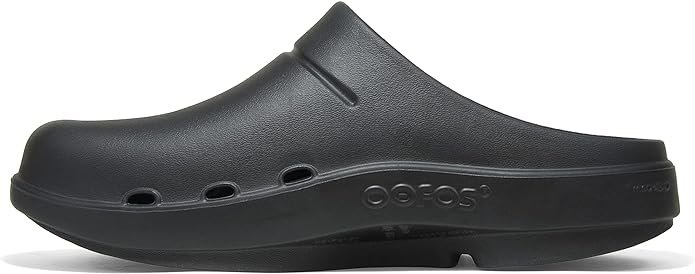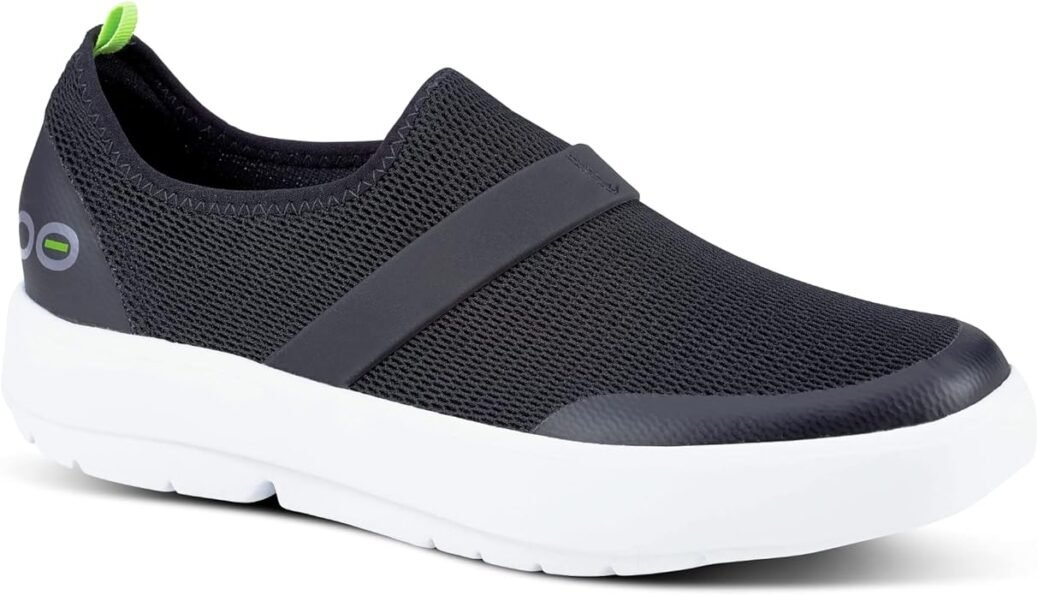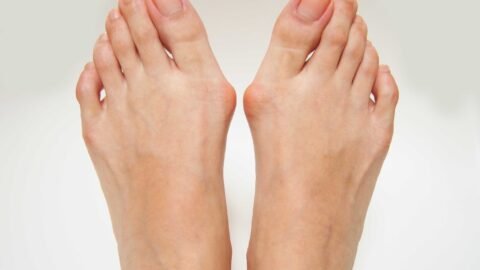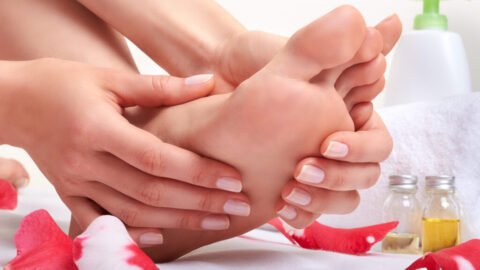Best Nurses Shoes in 2024 for Back Pain
Nurses often spend long hours on their feet, which can lead to discomfort and back pain. Choosing the right shoes is crucial as it not only affects comfort during those long shifts but can also impact overall back health. The connection between footwear and back pain is well-established, with the right support and fit potentially mitigating the aches associated with prolonged standing and walking.
When selecting the best shoes for nurses with back pain, several factors come to mind. Among them, materials and construction play a large role in providing the necessary support and durability for daily wear. Additionally, the proper fit and sizing of nurse shoes ensure even weight distribution and alignment, which can prevent strain on the back. For those with specific needs, shoes compatible with orthotic insoles offer a personalized solution. Notably, the heel height of the shoe must be conducive to comfort rather than exacerbating back pain.
Key Takeaways
- Supportive footwear can alleviate back pain for nurses on long shifts.
- Proper fit and the option for orthotic insoles contribute to overall comfort.
- Maintenance and selection considerations ensure long-term value and effectiveness.
Anatomy of Nurse Shoes and Back Pain
Choosing the right nurse shoes is critical for managing back pain. Proper shoes can provide the support and stability necessary to reduce stress on the spine during long shifts.
Importance of Arch Support
Nurses require shoes that accommodate the natural arch of the foot, as proper arch support is pivotal in distributing weight evenly. This helps to maintain natural posture and reduce lower back strain. Shoes recommended by podiatrists for back pain typically emphasize enhanced arch support, which can be integral for those on their feet all day.
Cushioning and Shock Absorption
The cushioning within nurse shoes plays a significant role in shock absorption. Each step can send impact up the legs and spine; therefore, shoes with superior cushioning, like those with rave reviews for instant pain relief, can minimize this jarring effect and offer relief from back discomfort.
Sole Design and Stability
The design of the shoe’s sole affects overall stability. A slip-resistant and well-treaded sole ensures safety on various surfaces, reducing the risk of compensatory movements that can lead to back pain. Sole design that encourages even weight distribution and proper foot flexion is essential for back health, as seen in footwear that supports proper posture and minimizes stress on the back muscles.
Top Recommended Shoes for Nurses with Back Pain

Choosing the right footwear is crucial for nurses who suffer from back pain, as the correct shoes can provide the necessary support to alleviate discomfort. The following shoes are recommended for their orthopedic support, durability during long shifts, and safety features.
Sneakers with Orthopedic Support
- Clove Classic Nursing Shoe: These sneakers are popular in the nursing community for their balance of comfort and style, featuring ample cushioning and supportive design to reduce back strain.
- Asics Shoes: Asics offers a range of sneakers with gel technology for shock absorption, which can help to minimize back pain during long periods of standing and walking.
Clogs Designed for Long Shifts
- Oofos Women’s Oocloog Clog: Renowned for their foam construction that aids in the recovery process, these clogs are an excellent choice for nurses needing extra arch and back support.
- Alegria Shoes: A favorite among nurses, Alegria shoes provide a combination of comfort with slip-resistant outsoles and an anatomically correct footbed that helps in promoting proper posture and reducing back pain.
Slip-Resistant Nursing Shoes

- BALA Shoes: Built specifically for the healthcare industry, BALA footwear includes slip-resistant technology, which is essential for safety and reducing physical stress.
- Brooks Shoes: Brooks sneakers are not only slip-resistant but also known for their cushioning and stable support, crucial for those with back pain.
Material and Build Quality
Selecting the best nursing shoes for back pain involves examining the material and build quality which contribute significantly to the shoe’s overall comfort and support.
Breathable Fabrics and Materials
Shoes constructed with breathable fabrics allow for adequate air circulation, a critical factor for nurses who spend long hours on their feet. High-quality materials such as mesh or synthetic uppers offer ventilation, reducing the likelihood of moisture buildup and keeping feet dry and comfortable. For example, the Clove Classic Nursing Shoe employs breathable materials to enhance comfort during extended wear.
Durability and Construction
The shoe’s durability hinges on the robustness of its construction. A durable shoe should feature a strong bond between the upper and the sole, often achieved through reinforced stitching or adhesive. In terms of support for back pain, a shoe’s outsole needs to be made of a resilient material like thick rubber for shock absorption and longevity. For instance, the outsole construction of Ryka Women’s Devotion Plus 2 Walking Shoes is designed to endure the demands of the nursing profession while also catering to comfort and back support.
Fit and Sizing for Optimal Support
Selecting the correct fit and size of nursing shoes is crucial for ensuring comfort and support, particularly for those dealing with back pain. It directly impacts posture and alignment, which can alleviate or exacerbate discomfort during long shifts.
Importance of Accurate Sizing
Nurses must ensure their shoes are neither too tight nor too loose. Shoes that are too tight can cause blisters, calluses, and restrict circulation, leading to foot fatigue. On the other hand, shoes that are too loose can reduce the level of support to the foot and ankle, potentially leading to a misalignment of the spine. It is recommended that nurses measure their feet regularly as their size can change over time. Brands like ASICS Gel-Kayano and Hoka One One are known for their range of sizes and consistent fit, which can aid in finding the appropriate shoe size.
Adjustability Features
Adjustability features such as laces, straps, or Velcro allow for a customizable fit and can accommodate changes in foot size due to swelling, which is common during long shifts of standing and walking. Some nurses prefer shoes with a roomy toe box that provides space without allowing the foot to slide, thus maintaining proper alignment. The incorporation of removable insoles can also be beneficial, offering the possibility to insert orthotics for personalized arch support, as seen in options such as the Hoka Clifton 9.
Proper fit and adjustability are non-negotiable components in footwear for nurses, especially when considering the prevention and management of back pain.
Proper Footwear Maintenance

Maintaining the integrity and functionality of nursing shoes is crucial in managing back pain. Proper care extends the life of the shoes and ensures they continue to provide the necessary support.
Cleaning and Hygiene
Routine Cleaning: Nurses should clean their shoes daily to remove dirt and bodily fluids that can cause hygiene issues. Most nursing shoes designed for back relief can be wiped down with a disinfectant wipe or a cloth soaked in soapy water. Ensure they dry completely before the next use.
Deodorization: To prevent odor buildup, it’s recommended to sprinkle baking soda inside the shoes after each shift and let them sit overnight.
Regular Replacement Schedule
Monitoring Wear and Tear: Nurses ought to periodically examine their shoes for signs of wear, especially in areas crucial for back pain relief such as the arch support and heel cushioning. Flattened cushioning or worn outsoles can lead to improper posture and increased back pain.
Replacement Timeline: Experts suggest replacing nursing shoes every 6 to 12 months, depending on usage frequency and visible wear, to ensure continuous back support.
Health Benefits of Supportive Shoes
Supportive shoes for nurses play a crucial role in not only comfort but also in preventing long-term health issues. They can offer much-needed relief from the strenuous demands of the nursing profession.
Reducing Lower Back Strain
Supportive shoes help distribute body weight evenly, which is essential for nurses who spend extensive periods on their feet. This even distribution of weight can significantly reduce the strain on the lower back, mitigating the risk of chronic back pain often experienced by healthcare professionals.
Preventing Foot Disorders
Supportive footwear is designed to accommodate the natural shape and function of the foot. Features like adequate arch support and a well-designed footbed can prevent common foot disorders such as plantar fasciitis. Additionally, the right pair of shoes can guard against the overpronation or supination that contributes to foot pain and discomfort.
Compatibility with Orthotic Insoles
Selecting the right shoes for nurses can be crucial, especially when considering the integration and compatibility with orthotic insoles. These insoles play a significant role in providing back pain relief and improving posture during long shifts.
Custom Orthotics for Back Relief
For those nurses experiencing back pain, custom orthotic insoles may offer significant relief. These insoles are tailored to the individual’s foot structure and gait pattern, ensuring proper alignment and distribution of pressure. A study highlighted by Verywell Health notes that proper foot support can prevent conditions such as plantar fasciitis, which can indirectly alleviate back discomfort.
Insole Materials and Impact on Posture
The materials of insoles can be critical to their effectiveness. Memory foam, gel, and cork are common materials that offer varying degrees of support and comfort. As mentioned by NurseHive, shock absorption is particularly important for nurses with bad knees or back pain; materials like those found in HOKA ONE ONE shoes provide such cushioning. Likewise, a comparison by Shape between Dr. Scholl’s and Powerstep insoles reveals that nurses often prefer insoles that provide extra support during extensive standing periods, highlighting the impact that materials have on maintaining proper posture.
Impact of Heel Height on Back Pain

Heel height plays a critical role in spinal alignment and comfort for nurses. Understanding the connection between heel elevation and back pain is paramount for those standing for long hours.
Finding the Optimal Heel Height
The optimal heel height for nursing shoes should allow the foot to sit as naturally as possible, usually about one inch or less. Shoes within this height range aim to distribute body weight evenly, reducing the strain on the lumbar spine. Supportive, low-heeled shoes are advocated for as they can help maintain a neutral posture, diminishing the risks of developing back pain.
Risks of High Heels for Nurses
Wearing high heels frequently can lead to increased lumbar lordosis, an inward curvature of the spine. This position may put excessive pressure on the back, leading to discomfort and pain. Nurses often choose footwear that provides stability and cushioning over style, as high heels are impractical when prioritizing spinal health and all-day comfort.
Best Practices for Wearing Nurse Shoes
When selecting and wearing shoes for nursing, it’s essential to prioritize both comfort and support to mitigate back pain. Proper shoe selection and wearing habits can directly impact a nurse’s physical health during long shifts.
Breaking in New Shoes
It’s crucial for nurses to break in new shoes gradually to avoid foot discomfort and blisters, which can exacerbate back pain. Beginning with short periods of wear and then increasing the duration over time allows the foot to adapt to the shoe’s shape and support features.
Alternating Footwear
Nurses are advised to rotate between different pairs of shoes to maintain proper foot health and support. Alternating footwear prevents excessive wear patterns and gives shoes time to return to their natural cushioning state, ultimately benefiting foot and back health.
Cost and Value Considerations
When selecting shoes for nurses with back pain, it’s essential to weigh the long-term benefits of higher-priced, quality footwear against initial costs.
Investing in Quality Footwear
Quality footwear is a pivotal investment for nurses. It optimizes their well-being, potentially reducing healthcare costs associated with back pain. Nurses may find that shoes designed for their profession, like the Clove Classic Nursing Shoe, offer the required support and durability, even if they come with a higher price tag. The value of such footwear is measured not just in its price, but also in the comfort and protection it provides during long shifts.
Price Comparison and Budgeting
Budgeting for the right shoe is crucial. Nurses should compare various brands and models to find the balance between cost and comfort. For instance, options such as Oofos Women’s Oocloog Clog are presented as a best value choice, suggesting affordability while still prioritizing back support. Price comparison assists in making an informed choice without compromising on essential features necessary for a nurse’s health and workflow.
Frequently Asked Questions
Nurses often experience back pain due to long hours on their feet. Selecting the right footwear is crucial for alleviating discomfort and preventing further issues.
What are the top features to look for in nursing shoes to alleviate back pain?
Nurses should look for shoes with proper arch support, cushioning, and a snug but comfortable fit. The appropriate arch support reduces the strain on the back, while sufficient cushioning absorbs the shock of walking on hard surfaces.
How do Hoka shoes support nurses with back pain issues?
Hoka shoes are known for their enhanced cushioning and ergonomic design, which provide excellent shock absorption and support the feet’s natural walking motion, potentially reducing stress on the back.
Can wearing the right shoes reduce the risk of developing lower back pain for nurses who stand all day?
Yes, wearing shoes with supportive features can mitigate the risk of lower back pain. Shoes designed with proper alignment and cushioning prevent improper walking mechanics that could lead to back strain.
Why might nurses prefer waterproof footwear, and can it impact back pain?
Waterproof footwear protects against spills, which is important in medical settings. While not directly impacting back pain, waterproof shoes paired with supportive features can maintain foot health, indirectly benefiting the back.
What benefits do New Balance shoes offer to nurses with back discomfort?
New Balance shoes typically feature supportive insoles and cushioning technology that may help reduce fatigue and discomfort in the back during prolonged periods of standing and walking.
How can male nurses select shoes that provide adequate support for back pain prevention?
Male nurses should opt for shoes with stability features, ample cushioning, and a good fit. Specific models may cater to male foot anatomy ensuring proper support to mitigate back pain.









[…] footwear is critical, and I opt for shoes with good arch support and a snug fit at the heel to prevent sliding. A pair of quality running shoes is often my go-to […]